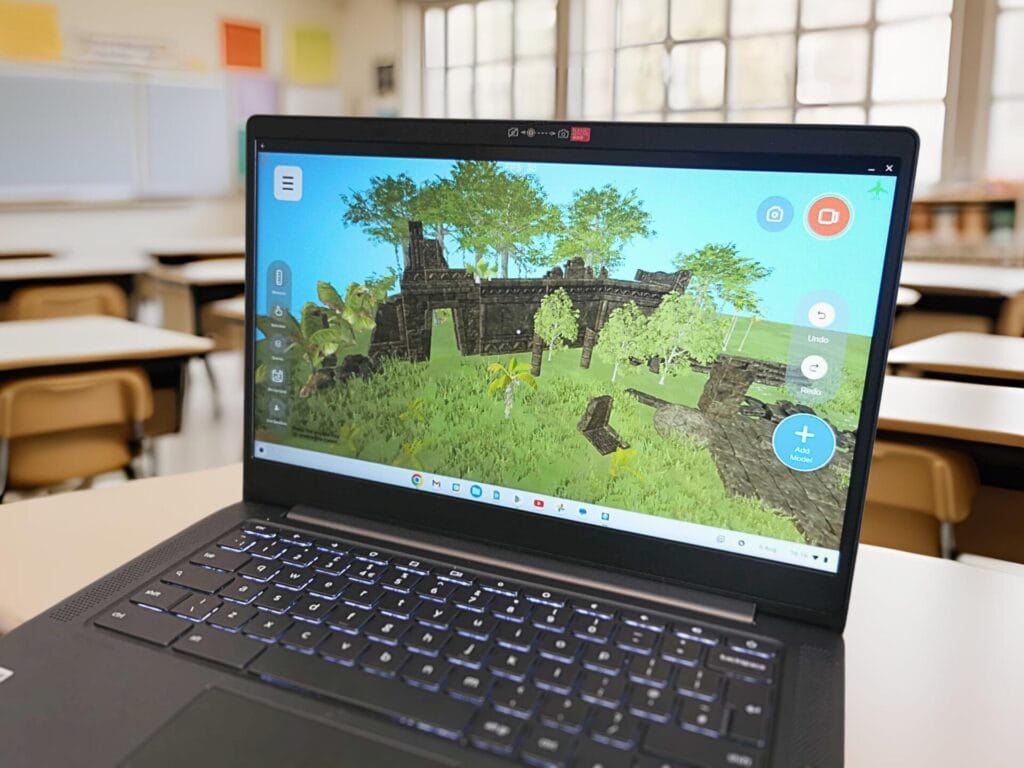84% of math and science teachers believe immersive technology improves student engagement and interest. Create simulations where students interact with their environment, like exploring a model of the solar system, or setting up a science experiment.
2. Labelling
Encourage students to label parts of scenes they build, such as the anatomy of an animal or parts of a diagram, reinforcing vocabulary and conceptual understanding. Alternatively, teachers can provide labels in the scene for students to match to the correct objects.
3. Self-Expression
Provide a blank canvas for students to express themselves by designing their own unique spaces, reflecting their interests, culture, and personality. Sandbox’s sharing feature means students can invite one another into their virtual worlds.
4. Scavenger Hunts
Set up scavenger hunts within a scene, encouraging students to search for hidden items or clues, promoting critical thinking and teamwork.
5. Collaborative Creation
Assign groups to co-create scenes, practicing teamwork and combining individual ideas into a shared virtual space. Pass around an iPad or Chromebook and have each student add something new.
6. Debates
Set up virtual “stages” for debates, where students can present visual evidence to support their arguments, and fully appreciate different perspectives. Why not stage a debate among pioneers at a real location on the Oregon Trail?
Hannah McNaughton-Hussain 2025-01-29 23:17:15
Source link

